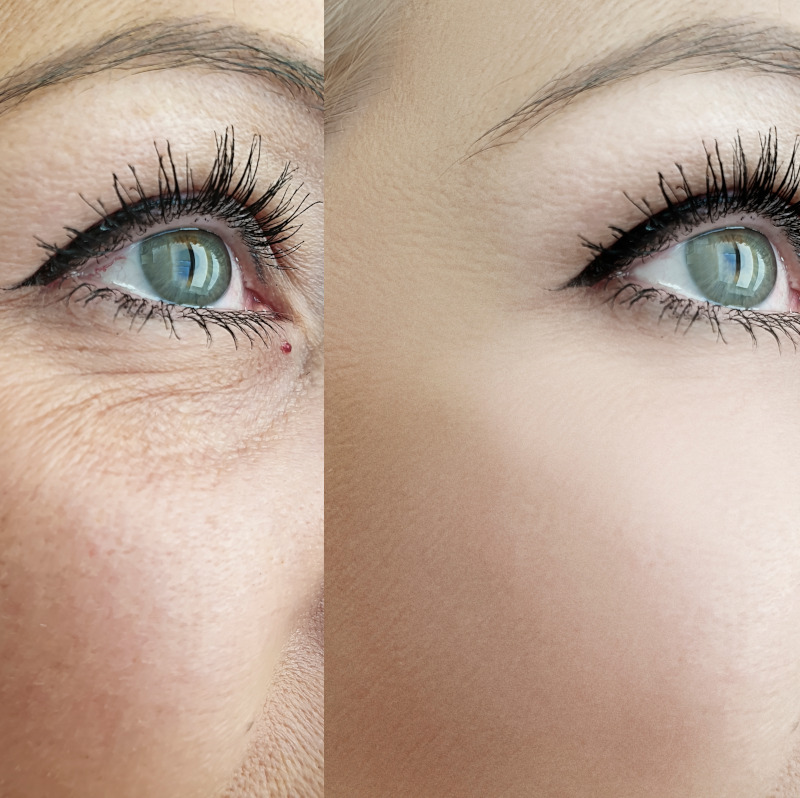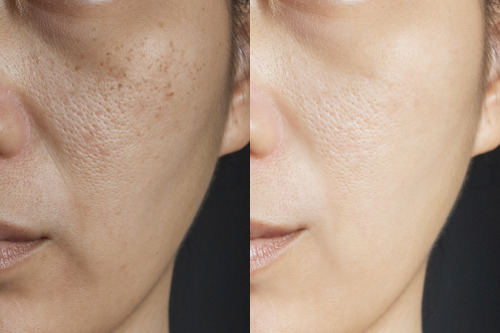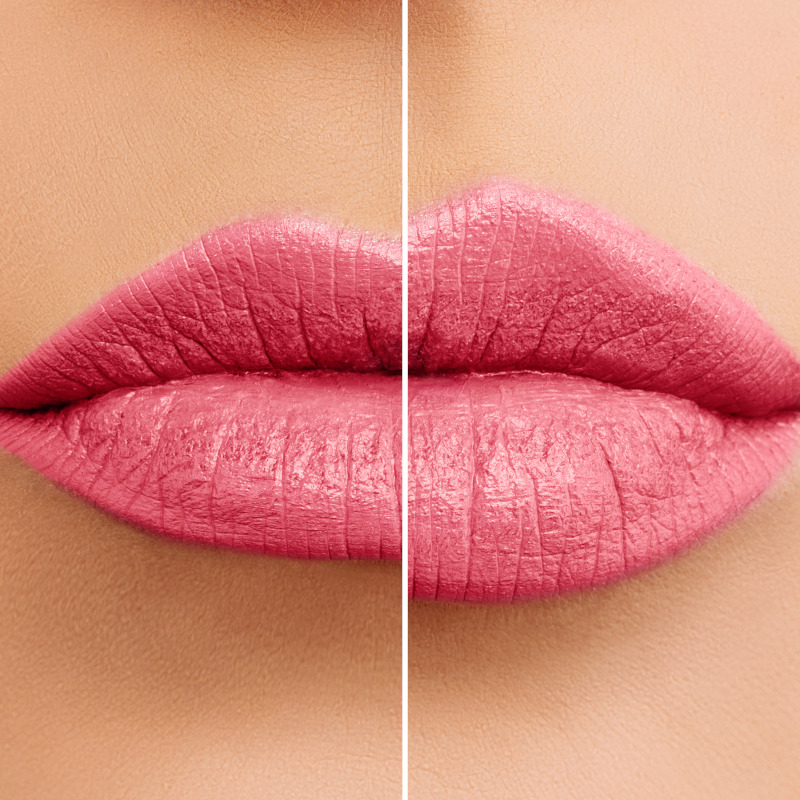What is Laser Skin Resurfacing?
Laser skin resurfacing at Madeliene Elaine is a nonsurgical aesthetic treatment that uses pulsating beams of light to eliminate dead and damaged skin layers. This treatment addresses skin tone and texture, pigmentation, and unwanted blemishes. Also referred to as a laser peel, laser skin resurfacing is considered an ideal facial treatment for patients who want softer, clearer, and younger-looking skin. We also perform lip augmentation, eyelid rejuvenation, facelifts, and so much more with the use of our superior laser technology. Depending on your needs and skin type, we can customize the laser. Usually, you have little to no downtime for these laser procedures. To learn more, please schedule an appointment at our Chevy Chase, MD office with Dr. Madeliene Elaine Gainers.
Types of Laser Treatments
At Madeliene Elaine, we offer three types of laser skin resurfacing treatments that we can tailor based on your skin goals. We can use some for milder cases of skin damage while others are more aggressive:
- Ablative Laser Treatments
Ablative lasers eliminate thin skin layers, like dermabrasion or a deep chemical peel, with a precision that allows the laser technician to avoid damaging the nearby skin. Ablative lasers can tighten the skin and reduce the appearance of acne scars and wrinkles. - Non-Ablative Laser Treatments
Non-ablative lasers don't remove any skin — the laser light creates micro-damage to the skin cells to encourage the body's natural healing response. Non-ablative procedures work well for decreasing fine lines and wrinkles and can help patients who don't mind waiting 2 – 3 months for strong results. - Fractional Laser Treatments
Fractional lasers combine non-ablative and ablative lasers. A fractional laser treatment makes tiny holes deep within the skin layers. The body's automatic healing creates firmer skin. Fractional lasers can treat deep wrinkles, acne scarring, sun damage, and uneven pigmentation issues.
Reviews
Is Laser Skin Resurfacing For You?
When it comes to selecting which kind of laser skin resurfacing treatment is best for your skin, Dr. Gainers will need to assess multiple factors. Laser skin resurfacing works best for anyone who feels unhappy about their complexion. It can help patients who have:
- Sun damage
- Age spots
- Acne scars
- Fine lines and wrinkles
- Pigmentation issues
- Redness
- Rough textured skin
- Scaly patches
- Broken vessels
- Melasma
- Dermatosis papulosa nigra
Unfortunately, we do not recommend this treatment for patients with active acne. It's also important to be aware that you will require a recovery period after specific laser treatments. In some cases, depending on the condition of your skin, you may need up to 2 – 3 weeks for recovery.
Our Laser Skin Resurfacing Technique
Patients undergoing a deeper or more intense laser resurfacing treatment may need to use a retinoid cream for 2 – 3 weeks before the laser appointment. The retinoid helps prepare the skin for more effective results. In some cases, we may prescribe medication to reduce discomfort and help you relax throughout your session. If your complexion needs a mild treatment, Dr. Gainers may use local anesthesia to numb specific areas of the face. For the whole complexion or deeper laser treatments, you may require some form of sedation. After ensuring you feel comfortable, we ask you to relax in a treatment chair while the laser precisely and effectively treats the skin. You will feel the laser's heat followed by cold air from the system's built-in cooling device. The laser eliminates damaged skin cells and stimulates the production of collagen.
What to Expect
Following lighter resurfacing sessions, an ointment is applied to the treated skin, and you can return home to recover. The treated skin can look red, and you may have some swelling and irritation. These symptoms should subside in a few days. However, the skin peeling process will last for 3 – 5 days. For patients who plan to undergo a deeper resurfacing procedure, the recovery time will last longer. The treatment areas will most likely require protective dressings, and the burning, irritation, and swelling side effects will feel more intense. Dr. Gainers may prescribe pain medication to reduce these side effects. Often, the downtime for a more intense laser treatment can last several weeks.
No matter the level of resurfacing, you should use sun protection and reduce sun exposure. For all laser treatments, the skin will naturally flake, crust, and peel away. It's crucial to avoid picking at the skin during the recovery process to prevent scarring. Once the peeling process has stopped, the treated skin should feel softer and look clearer, younger, and rejuvenated.
Laser Skin Resurfacing FAQ
How much does laser skin resurfacing cost?
Laser skin resurfacing cost will depend on the treatment type you select. During your consultation, Dr. Gainers will understand your concerns and wants before reviewing the different types of laser resurfacing treatments available. After this, Dr. Gainers can help you select your treatment and discuss costs. Madeliene Elaine often offers skin treatment specials and packages, so be sure to ask during your appointment.
What's the best type of resurfacing for me?
Dr. Gainers can help you decide which resurfacing treatment will best meet your needs and goals during your consultation. What treatment is best for you will depend on the health and condition of your skin, any skin issues, and the skin depth you want your treatment to reach. How long you are willing to give your recovery might also be a deciding factor when you create a treatment plan. If you are in doubt, it is better to try a milder treatment and then assess your results and decide if you want something stronger for your next appointment.
How can I help my skin recover after a resurfacing treatment?
Dr. Gainers or someone on her team will give you tips on ways to help your skin heal after a treatment session. The number one rule is don't pick or peel your skin. Doing this can lead to lasting damage like scars. You should skip all hair removal methods in the treatment area, which includes shaving, waxing, or depilatory creams. We will suggest a cream to help soothe and heal your skin.
Should I get laser skin resurfacing, a chemical peel, or dermabrasion?
Once Dr. Gainers has listened to your skin problems, she will help you choose whether laser skin resurfacing, a chemical peel, or dermabrasion treatment will achieve your goals. Although they all improve your skin, each has its own benefits and drawbacks. During your consultation, Dr. Gainers can review each option and make a recommendation for your treatment.
How often should I get laser resurfacing treatments?
Based on the laser resurfacing options you and Dr. Gainers select for your procedure, you might need to wait several weeks or even a few months between treatments. Deep laser treatments will provide results that last a long time but will require more time for recovery. You should talk to Dr. Gainers about how frequently you want to return for treatments so she can consider this when recommending a treatment plan during your initial consultation.
A Softer, Clearer Complexion
Madeliene Elaine laser skin resurfacing procedures provide beautiful results and can help you achieve a more youthful complexion. If you are considering a laser resurfacing treatment and would like to receive additional information, please call our Chevy Chase, MD practice. To learn more about this treatment and other cosmetic options, we encourage you to contact us and schedule your appointment with Dr. Gainers.



